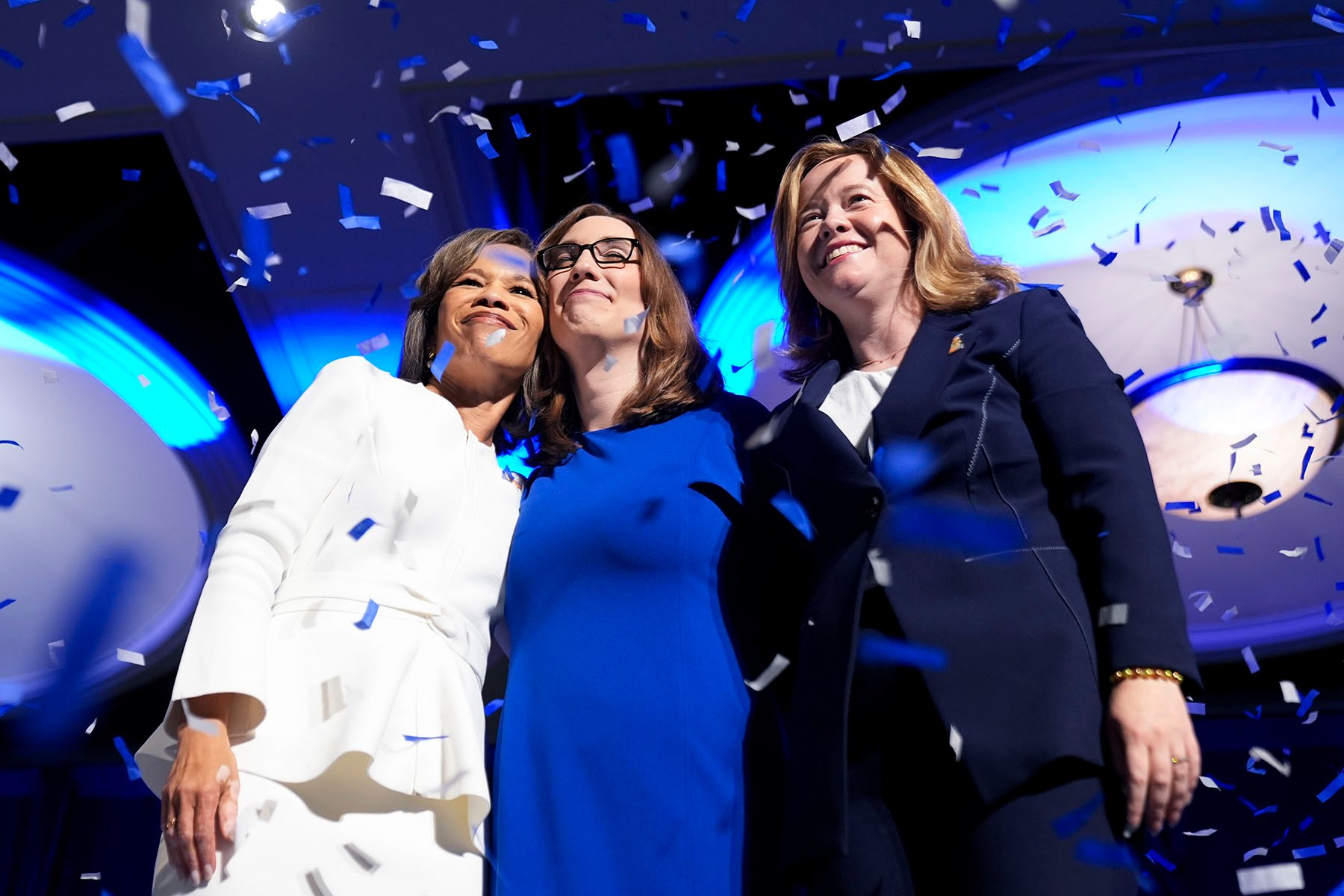Two years ago, the U.S. Senate did not have a single Black woman. And before that, only two Black women had ever served in the upper chamber of Congress.
Lisa Blunt Rochester in Delaware and Angela Alsobrooks in Maryland will change the math. They are both projected to win their races on Tuesday — making history while bringing greater representation to Congress and maintaining the Democrats’ hold on the seats.
This is also the first time that two Black women will serve as senators together — and they will each take seats held by White male Democrats.
“We’re at a particular moment in American history where people, I think, are wanting a change,” said Sydney Carr-Glenn, an assistant professor in the Department of Political Science at the College of the Holy Cross. “We have more minority voters relative to, let’s say, 20 years ago. And minority voters are often going to vote on descriptive and substantive representation. Oftentimes they’re going to vote with people who not only align with their interests, but also align with them identity-wise.”
Blunt Rochester and Alsobrooks were two of three Black women running as Democrats for open Senate seats. Valerie McCray ran for a seat in Indiana, but struggled to compete in the Republican stronghold.

Blunt Rochester first made history in Congress eight years ago as the first Black person and woman elected to represent Delaware. She got her start interning for then-Rep. Tom Carper — the man she will succeed in the Senate. In the 1990s, she served in state government roles, as deputy secretary of the Delaware Department of Health and Social Services and secretary of the Department of Labor.
Alsobrooks interned for Del. Eleanor Holmes Norton and the Congressional Black Caucus early in her career and went on to become state’s attorney for Maryland’s Prince George’s County, and then county executive since 2018.
As Black women candidates running for the same office in neighboring states, Blunt Rochester and Alsobrooks have developed a friendship as aspiring “sister senators.” They will join the small but growing sisterhood of Black women who have held the title of U.S. senator. Blunt Rochester and Alsobrooks not only have a relationship with each other, but also with Vice President Kamala Harris, who won a Senate seat in California in 2016 and Laphonza Butler, who was appointed to her Senate seat in California last year.
In a conversation with The 19th in September, Blunt Rochester spoke about the significance of having other Black women to lean on during her campaign.
-
Previous Coverage:
“Running for office can feel very isolating. You might be around a whole lot of people, but they’re not having the experience that you’re having. There’s so much pressure sometimes, because you want to not make a mistake, because you know so much is on the line. So many people are counting on you. And so, the ability to have that kind of sister support means that you understand, ‘I’m not in this alone,’” she said.
Blunt Rochester and Alsobrooks competed in very different races for the Senate, with Blunt Rochester viewed early on as the favorite to win. Alsobrooks on the other hand, defeated a wealthy millionaire in the Democratic primary and entered a tightly competitive general election race against former Maryland Gov. Larry Hogan, a Republican who is popular among constituents. By Election Day, Alsobrooks was polling ahead of Hogan by double digits.
Both Alsobrooks and Blunt Rochester rooted their campaigns in highlighting lived experiences that are often underrepresented in the Senate. Blunt Rochester worked her way through graduate school with a young son. She divorced her first husband in the early 2000s and later remarried Charles Rochester, who died suddenly from blood clots in 2014.
Alsobrooks, for her part, was raising a daughter during each of her campaigns for state’s attorney, county executive and the U.S. Senate. She previously told The 19th how she had to think about things like childcare. During her Senate campaign, she was also caring for her aging parents. She touts her personal experiences and work in law enforcement as qualities that connect her with voters.

“I’m the only person in the race who has any experience at all in dealing with these issues. It’s one thing to talk about the issue, you know, from a theoretical standpoint, about what you feel,” Alsobrooks told The 19th in the spring. “It’s a different experience to say, I know what it means to keep communities safe, while also working not to harm our children, and also making sure that we have the appropriate justice and second chances built into the system.”
Researchers and political advocates who spoke with The 19th said the victories by Alsobrooks and Blunt Rochester are a powerful moment for a country where Black women candidates often struggle to secure seats in statewide elected offices. Their campaigns further debunk the myth that Black women cannot fundraise or cannot appeal to a wide variety of voters across their diverse states. Alsobrooks raised more than $28 million in her Senate campaign and outraised Hogan by nearly $17 million, according to OpenSecrets.
-
Previous Coverage:
-
Previous Coverage: Angela Alsobrooks wants you to know she really gets it
These successes are built on the foundation of others who came before them, including Cheri Beasley, who ran for Senate in North Carolina in 2022, Val Demings, who ran for Senate in Florida that same year, and Stacey Abrams, who ran for governor in Georgia twice.
Barriers still remain, however, particularly during a time when women and women of color in public office face targeted disinformation, misogyny, racism and threats against their personal safety.
In terms of policy, even though Blunt Rochester and Alsobrooks are individuals who will be expected to address specific needs for their constituents, there is an opportunity for them to amplify each other’s perspectives, said Wendy Smooth, a political science professor at Ohio State University.
“With more than one voice at the table, there is this opportunity for amplification that doesn’t exist in spaces where you are the only one,” Smooth said. “Studies have shown that people are more likely to hear the voices of those who are underrepresented in the room, if they are not the singular voice.”







